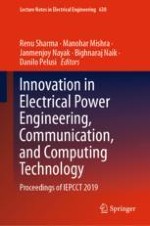This book features selected high-quality papers from the International Conference on Innovation in Electrical Power Engineering, Communication, and Computing Technology (IEPCCT 2019), held at Siksha 'O' Anusandhan (Deemed to be University), Bhubaneswar, India, on 13–14 December 2019. Presenting innovations in power, communication, and computing, it covers topics such as mini, micro, smart and future power grids; power system economics; energy storage systems; intelligent control; power converters; improving power quality; signal processing; sensors and actuators; image/video processing; high-performance data mining algorithms; advances in deep learning; and optimization methods.
